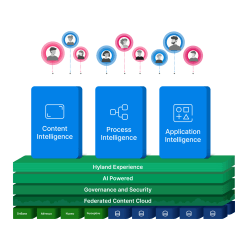Business benefits of a low-code BPM platform
The benefits of a low-code BPM platform are derived from the minimal manual coding required and the ability to rapidly create and deliver applications to the business.
Key benefits of low-code software include:
Lower operating costs
Most businesses still feel they must choose between buying vs. building to release process improvements or launch business applications. Both options will demand significant investment, either in the form of development costs or the fee to hire external vendors.
Low-code BPM gives businesses the ability to test and roll out updates without costly investment. Your own professionals get to reduce the IT sprawl and minimize overhead costs by building applications and updates through one platform.
Faster updates and prototypes
Nontechnical line-of-business (LOB) users could find it difficult to conceptualize the improvements that need to be done to a process of workflow.
With a low-code approach, both IT teams and LOB users will be able to launch a smoother ideation-to-automation lifecycle. LOB users will find it easier to convey process improvements through drag-and-drop tools and other visual modules. This lessens the back-and-forth feedback that ties up IT teams from working on other projects and allows BPM transformation to take place faster.
Greater standardization across processes
It is challenging to enforce standard security standards or achieve maximum efficiency when procedures are inconsistent.
Low-code offers a user-friendly development platform that can be customized for each team. This standardization makes it simple to modify business applications and roll out new updates according to an existing BPM outline. This would make it easier to implement instant updates to a workflow without extensive or manual coding.
Reduced IT backlogs
Coding-intensive platforms end up causing IT backlogs in an organization. Your IT teams must devote their resources to making small changes every step of the way. Subsequently, LOB users that want to apply automation or other BPM strategies could end up waiting months for an application to go live.
Implementing a low-code platform means that your IT teams do not need to be heavily involved in every process upgrade. As a result, IT staff and developers get to devote more time and effort to projects that will improve security or accelerate large-scale digital transformation.
Better compliance and risk management
Low-code software development allows your businesses to keep up with fast-changing regulations and consumer expectations. The low-code approach makes it simple to modify applications or deploy releases to meet new requirements by:
- Optimizing processes quickly as required by new regulations
- Eliminating risky shadow IT procedures
- Outlining permission and controls for specific business users















